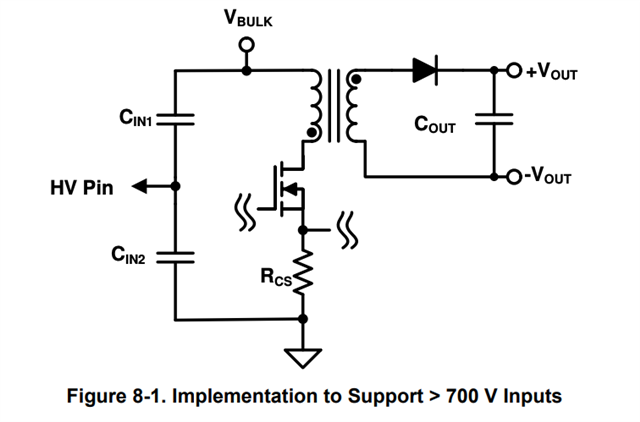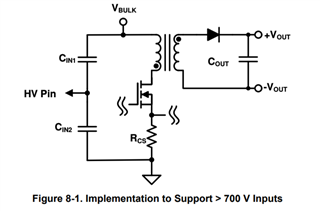Other Parts Discussed in Thread: UCC28740, UCC28730, UCC28740-Q1
Hi,
the data sheet of the UCC28740 suggests to use two capacitors to allow start up from high voltage for voltages above 700Vdc. Why is this not included in the data sheet of the UCC28730? Is it possible to use the same setup with the UCC28730?
How would you calculate the size of these capacitors?
Kind regards




